Powdery mildew is one of the common fungal diseases that affects roses. The causative agent of powdery mildew on roses is Sphaerotheca pannosa, a powdery mildew fungus.
Other names for powdery mildew are belle rose, spheroteka. This article will cover the following questions:
Description of the disease
Small whitish powdery spots appear on the foliage of a diseased plant, which, it would seem, can be easily erased. But the spots form again and again, quickly growing throughout the entire leaf plate. The white coating on the leaves of the rose spreads to the green shoots and peduncles. As a result, the leaves curl and dry out, and the shoots develop poorly.
This powdery coating on the leaves of roses forms the mycelium of the powdery mildew fungus, consisting of conidia. Conidia are spores of asexual reproduction of a fungus in the summer, which are easily transported by the wind to neighboring plants. Spheroteka can infect an entire bush in a few days. If urgent treatment measures are not taken, the plant will be weakened and the shoots will not ripen. In winter, such a rose is in danger of freezing.
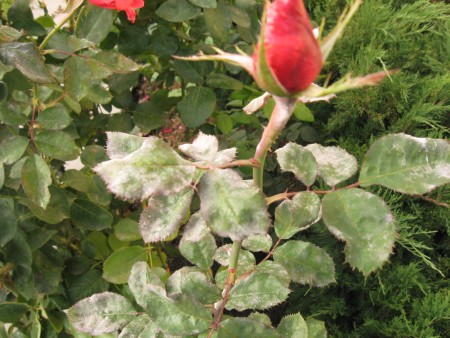
A rose bush is severely affected by powdery mildew; all the leaves of the plant are covered with a white coating.
By autumn, the plaque thickens, small dense dark dots appear on it - cleistothecia. These are the fruiting bodies of the fungus, inside which spores of sexual reproduction of the fungus are formed. In this form, the fungus overwinters, and in the spring the spores are released and again infect the plants.
What contributes to the rapid development of the disease
Powdery mildew develops quickly at temperatures of 20-25 degrees and relative humidity up to 80%. Such favorable conditions for the disease are created:
- When warm weather sets in after the rains, moisture begins to evaporate and the relative humidity rises.
- In dense rose gardens with poor air ventilation, high humidity is formed, which contributes to the development of the disease.
- Large differences between day and night temperatures are accompanied by heavy dew.
- Excess nitrogen-containing fertilizers promotes the growth of young, tender leaves, which are the first to suffer from infection.
Prevention of powdery mildew on roses
It is well known that it is easier to prevent a disease than to fight it for a long time and painfully. Preventative work to prevent powdery mildew will protect your flowers from many other fungal diseases.
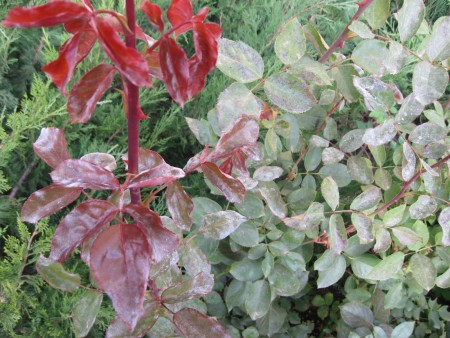
If a white coating like this appears on the leaves, it means your rose is affected by powdery mildew and you must immediately begin treating the disease.
Prevention measures:
- Removing infected leaves, shoots and other plant debris on which a white coating has appeared (such as in the photo). Weeding around the bushes.
- Do not rain on roses.
- When planting roses, maintain the required distance between the bushes, because... In dense plantings, due to poor air circulation, increased humidity occurs.
- Use nitrogen-containing fertilizers sparingly and only until mid-summer. Nitrogen promotes strong growth of young leaves and shoots, which powdery mildew attacks first.
- Potassium-phosphorus fertilizing promotes the maturation of shoots and buds and increases the rose's resistance to fungal attacks.
- Spraying rose bushes and the surrounding soil with copper-containing preparations in early spring and late autumn.
- Positive results are obtained from preventive treatments with biofungicides (Fitosporin-M, Alirin-B, Planriz, etc.).
- Purchase and plant roses that are resistant to powdery mildew.
Treatment of powdery mildew
If, after all, powdery mildew has reached your roses, you need to start treatment as quickly as possible. To combat this fungal disease, there are many contact and systemic drugs.
Contact fungicides work on the surface of the plant, destroying pathogens upon contact with them. This group includes sulfur preparations, Bordeaux mixture, copper oxychloride, copper sulfate, and iron sulfate.
Systemic fungicides penetrate the plant tissue, making the juices destructive to fungal pathogens. The following drugs are effective against powdery mildew: Topaz, Skor, Rayok.
Rules for treating roses with fungicides:
- Before spraying, you need to cut off all parts of the plant affected by the disease and remove plant debris around the bush.
- The best time for spraying is morning or evening hours in dry, windless weather.
- Carefully spray all parts of the plant, trying to wet the leaves both from above and from the bottom. It is especially important to follow this rule when working with contact drugs.
- Since fungi can become resistant to fungicides, with repeated treatments it is necessary to alternate systemic and contact preparations.
Let us consider below the fungicides used to treat powdery mildew on roses in more detail.
- A proven and effective treatment for powdery mildew at the initial stage is colloidal sulfur. This is a contact fungicide. The powder is dissolved in an amount of 30 g in 10 liters of water. It should be taken into account that at temperatures below 20 degrees, the effectiveness of sulfur decreases, so the concentration of the solution must be increased to 0.8-1%. At temperatures above 35 degrees, the leaves may be burned by the drug.In extreme heat, sulfur should not be used.
- The contact preparation Tiovit Jet contains 80% sulfur and is similar in its action and method of application to colloidal sulfur. The solution is prepared at the rate of 30-80 g per 10 liters of water.
- Systemic fungicide Topaz is used for the prevention and treatment of powdery mildew. The working solution is prepared at the rate of 2 ml per 5 liters of water. If necessary, treatment can be repeated after 10-14 days.
- A universal drug of systemic and contact action, Skor is used both for the treatment and prevention of powdery mildew. 1 ml of the drug is diluted in 5 liters of lukewarm water. Speed is most effective at 14-25 degrees.
- Fungicide Rayok is an analogue of the drug Skor in composition and has a long-lasting therapeutic and protective effect over a wide temperature range.
- Topsin M is a systemic drug with preventive and therapeutic effects. To combat powdery mildew, 10-15 g of powder is diluted in 10 liters of water.
- Strobi is a systemic drug with a wide spectrum of action. To spray rose bushes, dilute 2-4 g of granules in 10 liters of water.
Folk remedies for combating powdery mildew on roses
There are many traditional methods for treating powdery mildew. These remedies are good as preventive protection and at the onset of the disease. As soon as you notice characteristic white spots on the leaves, treatment should begin immediately. In addition, some of the substances used serve as an additional source of nutrients and enhance plant immunity.
- Dilute 1 liter of whey in 5 liters of water and add 10 drops of iodine. The resulting solution is sprayed on roses 2-3 times a month.The serum not only protects and treats powdery mildew, but is also a source of microelements for the plant.
- Ash is often used to treat roses. Pour 1 kg of sifted ash into a bucket of warm water and leave for 3 days. Drain the light infusion, strain and use to spray rose bushes. For better adhesion, you can add a spoonful of laundry soap. Add up to 10 liters of water to the remaining sediment and water the plants at the root as a top dressing.
- Dilute 2 tablespoons of baking soda in 5 liters of water, add a spoonful of laundry soap and treat roses every 10-14 days for prevention. In case of illness, treatment should be carried out three times at weekly intervals.
- Pour fresh cow manure with water in a ratio of 1:3 and leave for three days. The resulting infusion is diluted with water 1:10 and used to treat bushes.
- Mix 40-50 g of soda ash in 10 liters of hot water and add 40 g of laundry soap. The cooled solution is sprayed onto the bushes with a one-week break, up to two times.
- In the initial stage of the disease, you can treat the plant with a solution of potassium permanganate (3 g per 10 liters of water) up to three times with an interval of 2-3 days.
Rose varieties resistant to powdery mildew
There is a wide selection of roses on the market that are resistant to powdery mildew. Below we give a description of some varieties that are distinguished by good immunity to diseases.
Cadillac – rose of the patio group. Bush up to 80 cm high. Double flowers, scarlet in color, size 5-8 cm, without aroma.
Augusta Luise is a hybrid tea rose with large, up to 15 cm, apricot-pink flowers with a strong aroma. Bush up to 120 cm high. The rose blooms all summer.
Galaxy – floribunda rose. Bushes 80-100 cm high, spreading.The rose blooms profusely with creamy-yellow flowers with a pinkish edge, collected in a brush of 3-5 pieces. on the stem. Flower diameter up to 8 cm.
Westerland – scrub rose with large salmon-yellow flowers measuring 10-11 cm. The bush grows up to 2 m. The rose blooms profusely all summer and has a strong aroma.
Aspirin (Aspirin Rose) - a rose from the floribunda group. The bush grows up to 80 cm. Flowering is long and abundant, up to 15 pcs. in the brush. The flowers are white with a pinkish tint in the middle, measuring 4-6 cm.
Aphrodite – hybrid tea rose with magnificent large 10-12 cm flowers of soft pink color, has a delicate aroma. The bush is compact, about 80 cm in height.
Lady of Shalott - English rose with double salmon-pink flowers measuring 8-10 cm and a warm aroma. The bush is branched up to 1.5 m in height. The rose blooms throughout the season.
Gold Spice – floribunda rose with peach-yellow semi-double medium-sized flowers. The bush grows about 60-70 cm. Flowering is abundant and long-lasting.
It should be noted that the listed varieties of roses are resistant not only to spheroteca, but also to black spot.
By planting roses that are resistant to powdery mildew in your garden, you can make caring for your rose garden much easier. Of course, you should not neglect preventive measures, especially if the weather is unfavorable.
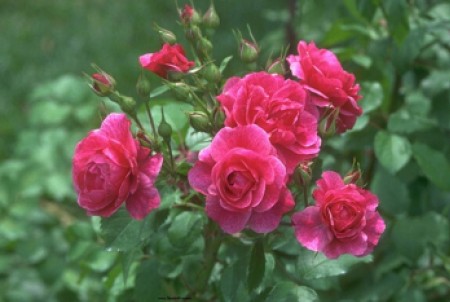
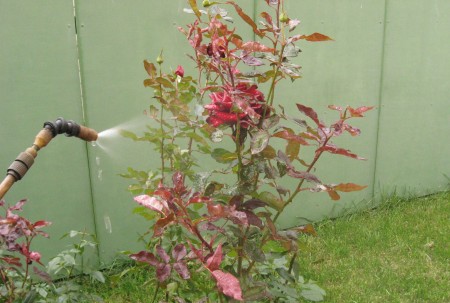
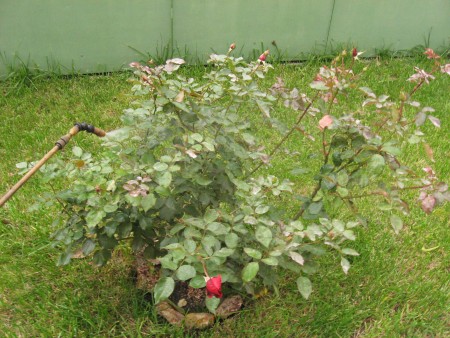
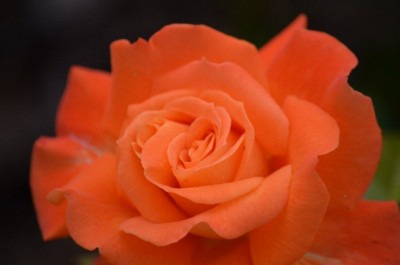
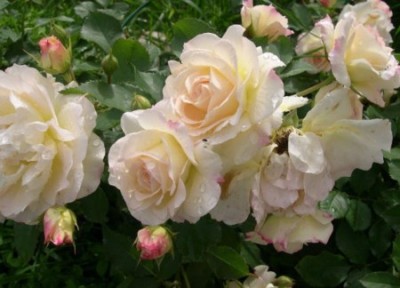
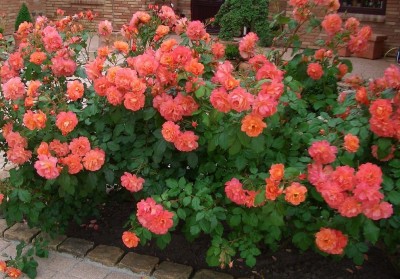
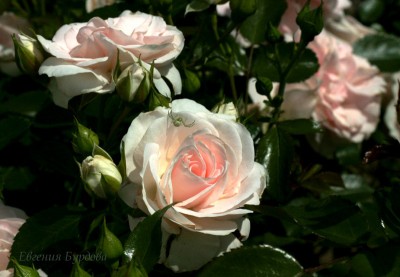

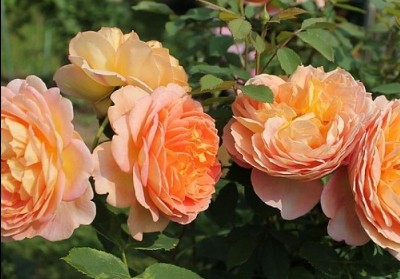


 (10 ratings, average: 4,40 out of 5)
(10 ratings, average: 4,40 out of 5) CUCUMBERS NEVER GET SICK, I'VE BEEN USING ONLY THIS FOR 40 YEARS! I SHARE A SECRET WITH YOU, CUCUMBERS ARE LIKE THE PICTURE!
CUCUMBERS NEVER GET SICK, I'VE BEEN USING ONLY THIS FOR 40 YEARS! I SHARE A SECRET WITH YOU, CUCUMBERS ARE LIKE THE PICTURE! You can dig a bucket of potatoes from each bush. Do you think these are fairy tales? Watch the video
You can dig a bucket of potatoes from each bush. Do you think these are fairy tales? Watch the video
 How our fellow gardeners work in Korea. There is a lot to learn and just fun to watch.
How our fellow gardeners work in Korea. There is a lot to learn and just fun to watch. Eye trainer. The author claims that with daily viewing, vision is restored. They don't charge money for views.
Eye trainer. The author claims that with daily viewing, vision is restored. They don't charge money for views. A 3-ingredient cake recipe in 30 minutes is better than Napoleon. Simple and very tasty.
A 3-ingredient cake recipe in 30 minutes is better than Napoleon. Simple and very tasty. Therapeutic exercises for cervical osteochondrosis. A complete set of exercises.
Therapeutic exercises for cervical osteochondrosis. A complete set of exercises. Which indoor plants match your zodiac sign?
Which indoor plants match your zodiac sign? What about them? Excursion to German dachas.
What about them? Excursion to German dachas.